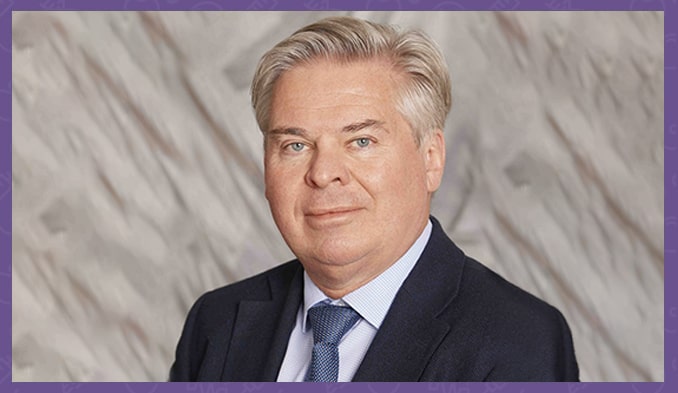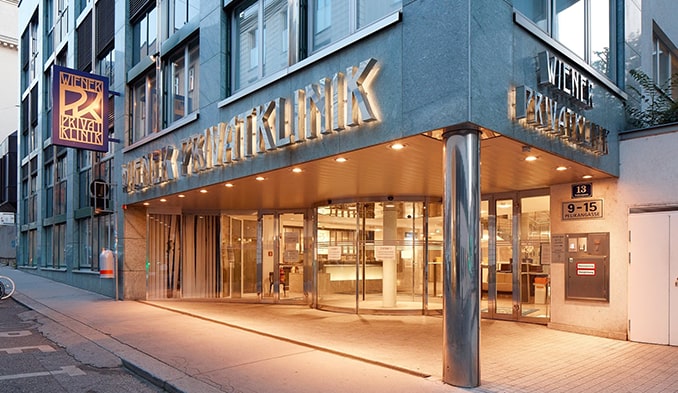Today, we ask Dr. Mülbauer for more information about disc herniation, its causes and treatment.
Dr. Mühlbauer, what is the nature of the disc herniation disease?
The disc serves as a cushion between the 2 vertebrae, thus connecting it. It is constructed of a strong fibrous sheath that surrounds an elastic core, also made of fibrous tissue. The natural process of degeneration causes the strong fibrous ring to weaken and over the years it can tear. When too much load is placed on the disc, parts of the core can reach the spinal canal through the tear and thus make contact with nerves moving down into this canal.
What do we observe in disc herniation?
The diameter of the spinal canal is known to be approximately 15mm. It is because of this that when parts of the disc tissue reach the spinal canal, they pinch the nerves located within it. Of course, it also depends on the size of these parts. In this case, we are talking about the so-called "slipped disc". Naturally, in this herniation, due to the pinching of the nerves or inflammation around the herniated disc, their irritation occurs. Patients experience pain precisely when the nerves are already irritated. The location of the pain depends on the nerve affected. Lumbar disc herniation is characterized by sciatic pain. Back pain that does not spread to the legs is rarely due to a disc herniation. A degenerated disc may be the cause.
In which of the vertebrae can we mostly observe disc herniation?
The disease most often develops in the lower lumbar spine (it can develop in all parts of the spine). This is due to the fact that the lumbar spine is highly curved. In addition, the discs at L4/5 and L5/S1 take both large vertical loads and large shear forces due to the obliquity at which they are positioned. As a result, the natural degeneration process is accelerated and the incidence of disc herniation in the lower lumbar spine increases.
Could you give us more information on the incidence of lumbar hernia and what the treatment is?
Nearly 150 out of 100,000 people suffer from disc herniation every year. Different degrees of severity are seen and therefore may manifest differently. Small disc herniations can heal in 6 weeks with no specific treatment. Within this short time, patients take painkillers, take care not to put a lot of strain on the lumbar spine, and healing occurs naturally. Sometimes this is possible for larger hernias. However, when conservative treatment methods (painkillers, physical therapy, etc.) do not work and the pain persists for more than six weeks, surgical intervention is considered a reasonable option. Surgery must be considered if the disc herniation is the cause of motor weakness or weakening of the bladder functions. However, no more than approximately 1/3rd of all disc herniations are treated definitively by surgery.
Could you give more information about the disc herniation surgery and recovery period?
At its core, disc surgery is microsurgery and it uses a surgical microscope or endoscope. The disc is removed by making a 3-5 cm incision in the skin. The procedure is carried out under a microscope, which provides an excellent visualisation of the nerves, minimising the risk of them being injured during surgery. In the case of large disc herniations, which cause a motor deficit, the risk of it persisting is significantly higher if surgery is not performed, compared to all the other risks associated with it. When surgery is performed, the herniated portion of the disc is removed, stopping the pressure on the nerves. The recovery period is usually short, and if no complications occur, patients are discharged 2-3 days after surgery. As long as patients are not in discomfort, they are allowed to walk, sit and drive. Full disc recovery takes about six weeks, and during this time, patients must be careful of heavy weight bearing.
Once surgery is performed, does the pain stop forever and is it possible to re-develop a disc herniation?
As a consequence of the pinched nerve, patients feel pain. Usually, when the herniated disc is removed by surgery, it takes several days for the nerve to recover, as well as taking painkillers. However, in the majority of patients, the pain disappears on 90% immediately after the intervention. Physical therapy and other types of postoperative therapies are often administered after surgery to recover from neurological deficits.
It is possible for the patient to develop a disc herniation again because even after surgery, disc tissue remains. The risk of this happening is approximately 5%. Only the parts of the disc that have herniated are surgically removed, and the healthy fibrous annulus remains in place. Its volume is approximately 30% of the overall disc and if removed surgically would cause instability and use of, as well as healing using screws and rods. It is important to note that even with conservative treatment, there is a risk of developing a disc herniation a second time and it is similar to when surgery is done.
Is it possible to prevent disc herniation and how?
As time progresses, the functionality of each spine decreases. However, modern surgery still cannot implant a new spine. And in order to protect it, we need to regularly train the muscles that surround it It is these muscles, the back muscles, the deep abdominal muscles and those of the trunk that take the brunt of the load instead of the spine. Of course, this cannot guarantee that a disc herniation will not occur, but it certainly reduces the risk of occurrence.
More about Prof. Dr. Manfred Mülbauer
Univ. Dr. Manfred Mülbauer is an experienced neurosurgeon at the Wiener Privatklinik, with more than 25 years of experience in the field of spinal surgery, who has successfully performed discectomies and other spinal procedures.
Training:
Univ. Prof. Dr. Manfred Mülbauer graduated from the University of Vienna and chose neurosurgery as his specialty. He completed his specialization at the same institute. For his research training he went to Germany, where he trained in spinal surgery. He also completed fellowship training in microsurgical techniques for disc herniation.
CV and professional development:
- 1985: start of medical career at Hanusch Hospital, Vienna;
- 1987: Clinic of Neurosurgery at the University of Vienna;
- 1992: specialist in neurosurgery, specialist in intensive care medicine;
- 1994: ECFMG certification. Stay abroad with prof. Jürgen Harms (reconstructive spinal surgery) and prof. Prof. Dr. Axel Pernecka (minimally invasive neurosurgery);
- Since 1994: senior physician of the neurosurgery department at Donauspital.
- 2002: appointment as a member of the board of the neurosurgery department at Donauspital;
- Now: senior neurosurgeon at Wiener Privatklinik.
Memberships and Publications:
- Permanent member of the Austrian Society of Neurology;
- Active member of ANSS;
- Permanent member of the Austrian Association of Neuropathology;
- He has published more than 40 scientific articles on spinal injuries and treatment techniques;
- He has participated in many international conferences on innovative techniques in neurosurgery;
- He has organized many neurosurgical seminars at the Wiener Privatklinik.
Clinical area of interest:
- Spinal Neurosurgery;
- Microsurgery of herniated intervertebral discs and spinal canal;
- Spine, lumbar spine and neck surgeries;
- Stabilization surgeries for spinal instability - Complex interventions for spinal tumors.




